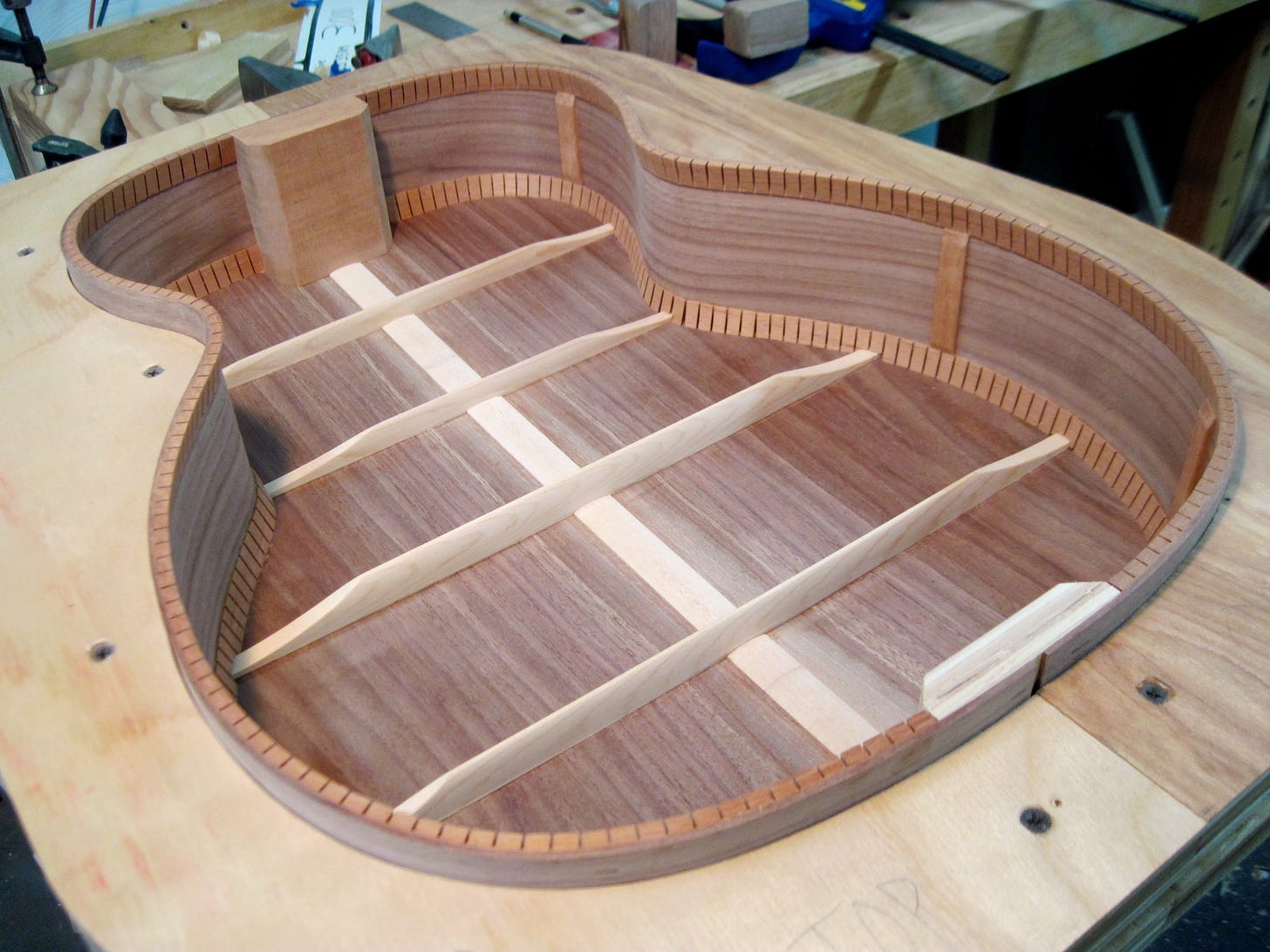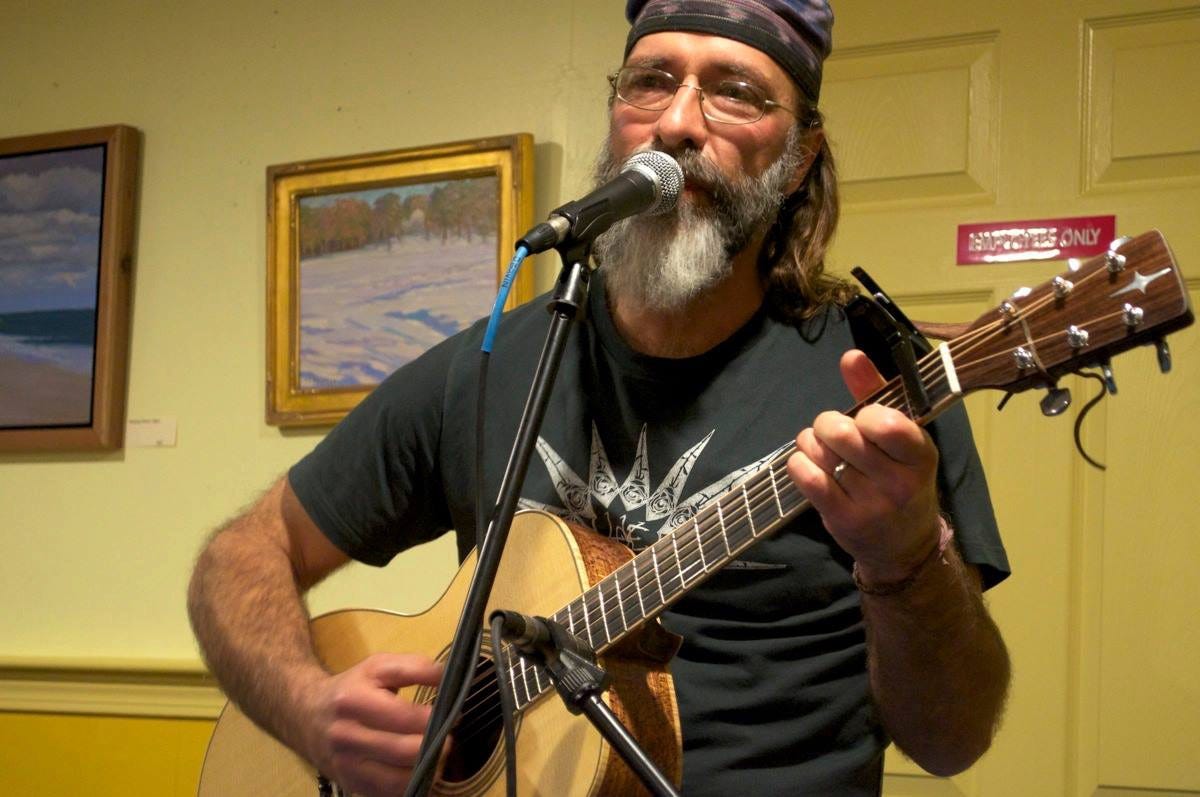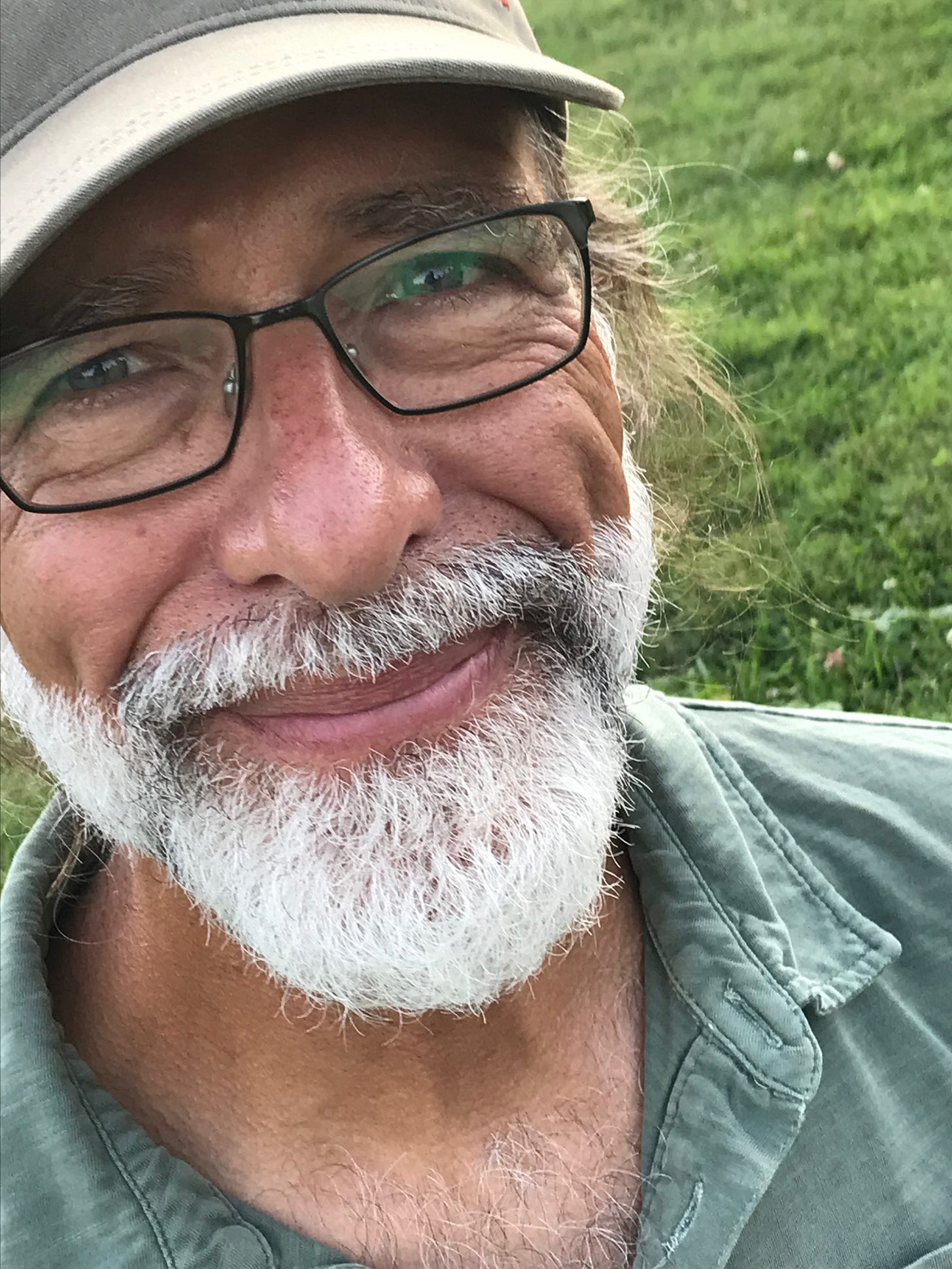You are reading Shy Guy Meets the Buddha: Reflections on Work, Love, and Nature. This weekly newsletter is always free, but if you’d like to show your support, a tip will help me continue the hard work behind these creative efforts; “Buy me a coffee” by clicking the button below. “Liking,” sharing, commenting, and subscribing will help promote my newsletter. Please take a few moments to show you care. Thank you! 💚
I have worked with wood all of my adult life, mostly as a building and remodeling carpenter, but also, in my spare time, in the pursuit of more personal creative projects like furniture and boat building. For a few years I tried my hand at lutherie, the art of stringed instrument building. The following essay is a revised piece I originally published in American Lutherie magazine. Although it is written with the guitar builder in mind, its theme, I think, is universal. If you like it, please let me know below. Even better, share it with a friend!
I recently visited an old acquaintance after hearing from a mutual friend that he’d been building guitars. It turns out he’d been building very fine instruments for over ten years. When I told him I was just starting my first guitar his response was, “Well, it must be nice to have all that ahead of you.”
His remark gave me pause. Yeah, I guess it is nice. I don’t know what motivated him to say that. Was the novelty of such a unique vocation already wearing thin? Or perhaps my innocent zeal awakened a nostalgia for his own early days learning the craft, where everything is new and exciting. But the comment stayed with me. I think of it often. It reminds me not to lament my inexperience, but instead, to value it. “In the beginner’s mind there are many possibilities; in the expert’s there are few,” writes Shunryu Suzuki in Zen Mind, Beginner’s Mind.
Since joining a local luthiers’ guild, I’ve met a few full-time builders who bemoan the fact that their days of experimentation are behind them. With waiting lists of patrons who expect only their best-selling signature models, these artisans have little time to try new things. As a novice, trying new things is pretty much all I do. It’s good to be reminded not to take that for granted. With an income from something other than guitar building, I am free to build any instrument I want, with any material I please. I don’t have to limit myself to dreadnaughts and orchestra models (OMs) made from conventional guitar woods.
One could assume most luthiers are going to be generally happy people. After all, the skill and patience of these dedicated artisans—these mavericks fearlessly traveling paths chosen by few—must surely mark them as discerning and well-balanced. The keen desire to create a finely-tuned machine of such delicate beauty must surely belong to only the most healthy and robust of body and mind.
Right?
Well... not necessarily.
Artists, craftspeople, artisans, call us what you will; we embody potent creative forces that we can’t easily ignore. But that doesn’t always mean we’re whistling cheerfully at the work bench. I have one luthier friend who is so stressed out by the building process that I wonder why he does it at all. Every project seems more like an armed conflict than a stimulating challenge, and the tension only builds as each instrument progresses and the risk of an irredeemable mistake grows. He’s been building guitars for a long time, and he’s still at it, but I don’t think I would call him happy.
Beginners like me can get starry-eyed about our new careers. We finish our first or second instrument, then rush right out to print business cards and design our websites, as if being a student is something to get over with as quickly as possible. But if we’re in too much of a hurry, we’re going to miss out on all the joys and pleasures of the discovery stage.
Getting the most out of what we do—not the most money or recognition, or the most or best instruments, but the most personal enrichment—requires self-examination. Often. Starting with the question: Why did I begin this endeavor in the first place? Sometimes that question alone is enough to help us recognize that we may have lost track of our original purpose.
For the longest time I’ve entertained this vision for myself: Imagine a sturdy but weather-worn New England barn, nestled in the country by the side of a rambling white-clapboard farmhouse. It’s a tranquil summer morning. The fields and woods are lush and green, the sky soft and blue, and the only sound other than the chirping of birds in the overhanging branches of a couple of mature silver maples is the smooth repetitive whoosh of a bench plane or the gentle tapping of mallet and gouge. Pan in slowly through the open double barn doors and into the darkened interior, and there am I in my Carhartt overalls, standing in a ray of dusty sunlight, fully absorbed at the carpenter’s bench, working a hand plane slowly back and forth over a piece of locally-harvested spruce or pine.
Visions like this are nice; they keep me going. But they can get me into trouble, too. The problem with dreams is that they lack an important element of real life—reality. And when you are actually standing at the bench working that wood, you may still be dreaming of some future state in which everything is perfect and beautiful.
We may not be as far off track as we think. Sometimes we just need to stop for a moment and actually listen to those birds, notice the dark and light shades flickering in those sunlit trees, touch fingertips to wood and appreciate its patina, its warmth, its beauty. And then go back to work.
Or perhaps we are further off track than we meant to be—we find we’ve been tense or anxious, rushing the work, lost in thought, our minds three steps ahead of our bodies—in which case we dig deeper, asking: What pleases me most about building musical instruments or working with wood? What kinds of instruments do I like—to build, to look at, to listen to? What is my creative and personal style? Am I more of an engineer, an artist, a scientist, a naturalist, an innovator, a traditionalist?
Most questions contain their own answers, which begin to reveal themselves only when the questions are given life.
I learned a lesson about creative ambition when I tried performing my music in coffee shops and found that it wasn’t making me very happy. What was I trying to prove, and to whom? Was my goal to perform, or merely to achieve the identity of a performer? (For more on this phase of my ever-evolving creative life, see my post, “Another Writers Blog: Whatever For? or, How I Almost Became a Famous Singer/Songwriter.”)
Everyone wants to be liked and admired, to be good at something. And that’s fine; we don’t have to conquer our ego, it’s really just a question of awareness. If I am aware of my self-projections, my unique needs and desires, I can separate those needs from my other tendencies, talents, and motivating forces, and find some balance in my pursuits.
Building guitars, for me, is like writing songs; I love the act itself so much that I don’t even care what happens to the instruments afterward. And yet I still get confused about my ambitions or impatient about my progress: When will I sell my first guitar? Should I have my own headstock logo? If only I had started building five or ten years ago, I would be so much better now.
It’s so easy, especially in a competitive society like ours, to forget our original intentions and the importance of our own well-being.
We chose to become luthiers, and we work very hard at it. We deserve to enjoy it. The process is where all the magic happens, whereas the resultant pride and glory are short-lived. If we remember that, and try to focus on the pleasure and gratification of the individual tasks, the day-to-day steps that make up the life of an artisan, then perhaps we can be happy luthiers.
Wait! Before you go, will you take one moment to hit that SHARE button? This one simple action can be surprisingly effective at helping spread the word and build my readership. Thank you! And remember, subscribing is free and easy, and tips are very much appreciated. 💚














Wow. Tough choices. Good for her
I can relate to your story in several ways. As a professional jewelry artist for 37 years I experienced most of what you are writing so eloquently about. However there is one major difference, it was my livelihood. I started almost by accident as an engraver in ivory (scrimshaw) only because a friend offered me an opportunity to try one, I soon discovered I was good at it and liked it. I made good money at this art form for a few years. I found a state of mind I had rarely experienced before, only in making music. I found when etching scrimshaw the world would disappear and I would be lost in the work. Is that mindfulness? I’m not sure but is a state I found myself in often for the next 30 something years. After a few years of etching scrimshaw on ivory I realized as an environmentalist I couldn’t be part of the ivory trade even though I only worked on it and had no part in acquiring it from the source. I quit cold leaving some Nantucket basket weavers angry as they depended on my work to adorn their $3000 baskets. I had thankfully already become proficient in working with Gold and Silver. I thoroughly enjoyed the creative process, the intellectual process of creating tools and simple machinery unique to my needs. However the meditative state I once entered in the beginning of my short scrimshaw career was fleeting as this jewelry became a business and a business that I was building and had a lot of competition. During this time in my still creative career I became focused on making money and staying afloat. Sure I received praise and recognition and enjoyed the income and occasionally was pleased with a single piece of jewelry, but it could be stressful with gallery deadlines, employees, preparing for shows that could be responsible half my year’s income. I found I had become a human jewelry machine and it was stressful. It was then that I started a meditation practice although not a serious practitioner or devout Buddhist I found some relief and escape. As a result of this I realized the contrast in mindfulness and my work. I knew I needed to make some changes and slowed things down. I started hiking more, long distance bicycling, running, fasting and eating a more plant based diet. I wasn’t experiencing these changes to affect my relationship with my work but only as a relief from my work. However I found my work changing from producing production pieces that galleries expected of me to individual one off pieces that meant something to me. I realized my pieces could reflect who I was on a deeper level. I started using beach stones. And had the experience while walking the beach looking for humble ocean tumbled gems looking down the almost infinite beach that Mother Earth was providing me with a never ending supply of stones. My work was leading me to the beach and an occasional swim. Mother Earth was also providing me with my gold and silver although not as directly. As I was making some of these new found pieces to my surprise I would intellectually disappear during the process. To put it simply I would have an idea in mind, sit at my bench and perhaps hours later I would emerge from this creative meditation with a beautiful piece of jewelry sitting on my bench before me. I see that process as abandoning my active mind and becoming oblivious to my surroundings and being so mindfully focused i would barely have a memory of it. I had returned back to the once naive, pure infant of an artist I was when I started.
How magical, sitting in a basement of my rented duplex I became enlightened if only in a limited way. This experience didn’t visit me on every piece I made going forth but on many. I had acquired a new sense of confidence, peace and joy in my work. I found a new clientele who bought my work because they could feel it not just see or want it. I’ve retired from my jewelry career but the meditative emersion of creativity visited me often in the later years of my career. This state still envelopes me often when I do other art forms of art including my passion for wildlife photography and as I’ve written in another comment on this blog, sometimes that state takes over to the point that I drift from the camera to the environment around me and I forget I’m a photographer and become a being present now in my wooded surroundings.
I still don’t have a traditional meditation practice but consciously or unconsciously I remind myself “just this” from time to time
A note to Artists:
As experienced artists I expect you might know what I’m talking about.
For new artists I recommend, sitting with your materials in front of you, accepting that no one else has to ever see your work, suspend expectations of yourself and sit there, when your mind drifts gently remind yourself “just art” as ideas emerge act on them, if no ideas emerge well you have just meditated! Repeat process.
Just a suggestion.